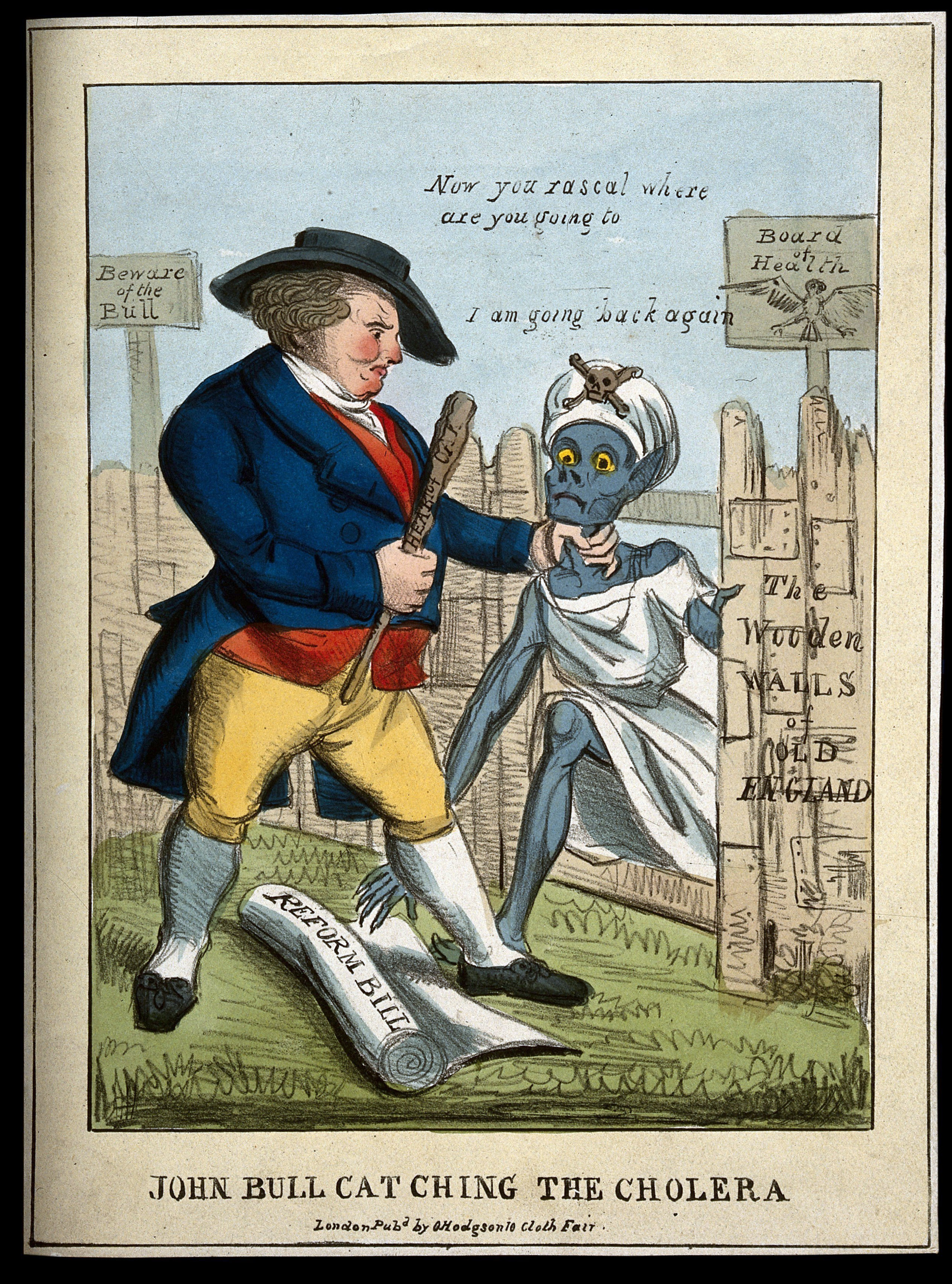Dr. Christopher Rose is a social historian of medicine focusing on Egypt and the Middle East in the 19th and 20th century. He is currently an adjunct instructor in Global Studies at St. Edward’s University in Austin, Texas, and spoke to Stranger’s Guide about what the history of pandemics can teach us today.
 Your expertise is in public health in 19th Century Egypt. What made you choose that as a discipline?
Your expertise is in public health in 19th Century Egypt. What made you choose that as a discipline?
It chose me! I’ve always been interested in how normal people live their lives, and much of the histories that are written about the Eastern Mediterranean before World War II are about elites, for the simple reason that most other people were illiterate and didn’t leave records. I was first drawn to health because I came across a cholera epidemic in 1883 where people were protesting what they saw as overreaction by the government because state health officials were entering private homes without permission. This is where I discovered the small but emerging field of the social history of medicine, where we’re not so much interested in disease from a medical perspective, but in looking at how people reacted to it. You can see how the population that didn’t leave records of their own reacted, because their reactions were recorded, and you get a sense of what was important to them because their lives were being disrupted.
The “Spanish influenza” pandemic that struck Egypt in fall 1918 resulted in the death of eleven out of every one thousand people. How does that compare to the current coronavirus?
Although the “Spanish” flu pandemic went around the world in three waves over a three year period, the most lethal wave was the second, and it hit much faster than COVID-19. In Egypt, for example, the majority of deaths – over one percent of the country’s population at the time — took place within an eight week period. In contrast, the first cases of COVID-19 were reported in November, so it’s been nine months already. By the time the severity of the influenza became clear, it was almost over. COVID-19 is a serious disease, and we won’t be completely in the clear until we have a vaccine, but so far there have been no mutations. It’s been fairly predictable in the way that it behaves, which has allowed most of the industrialized world (with a couple of unfortunate exceptions) to bring its spread under control.
In all the pandemics you’ve studied, where (and when) has been the most successful response from a public health perspective?
The eradication of smallpox is still probably the best known “man versus virus” success story. However, once the etiology (how one contracts an illness) of other diseases like cholera (tainted water), typhus, and relapsing fever (both louse-borne) became known, they became much easier to prevent. Today, for example, cholera outbreaks are extremely rare, and tend to happen in the aftermath of natural disasters or refugee camps, because cholera proliferates in areas where people aren’t able to access clean water.
There’s a lot of talk about the current politicization of the coronavirus — particularly in America. Has this ever happened before?
Nearly every “new” disease has been politicized. We don’t even have to go that far back in time—the lengthy delay in addressing the HIV/AIDS crisis was considered a huge failure for the Reagan administration. There was massive panic around polio in the 1950s in the US, even though we had had a president (Franklin D. Roosevelt) who was a survivor. This idea that the government needs to “do something,” has led to extreme actions—during the 2009 “swine flu” epidemic, the Egyptian government slaughtered all of the pigs in the country even though they weren’t actually the carriers of the disease (this was also aimed at depriving a subset of the population who lived in a squatter settlement their livelihood in hopes that they would move). Even the reconfiguration of Paris in the 1850s under Baron Hausmann was partially based on the notion that broad avenues would not allow miasmic fumes to collect, and make the city healthier—the fact that it also made it harder for neighborhoods to barricade themselves in was an added bonus!

In your course description you include a cartoon of John Bull defending the British against the invasion of cholera in the 1800s. Cholera is depicted as a blue ‘being’. Why?
He’s not only blue, he’s dressed in a turban and korta-pyjama, stereotypical Indian clothing. It was considered extremely important by the British that cholera came from India (hence the outfit); the disease was even called Asiatic cholera (“cholera” as a term had been previously used in England as a generic term for any sort of gastrointestinal discomfort). Cholera kills by causing the body to expel massive amounts of fluid, with death resulting from dehydration. Victims would often turn purplish-blue in the final stage of the disease because of the loss of fluid.
Trump often refers to COVID-19 as the ‘China Virus’. But this isn’t the first time a pandemic has led to racism (as you have already shown in the cartoon above). Can you give some other examples of this (in your course description you mention the classification of certain diseases as ‘non white’)?
The idea that “they” (whoever “they” are) are an unsavory social element because they carry disease is almost as old as time. The Black Death was blamed on Jews in parts of Europe, where it was said they were poisoning wells; there were a number of Jews burned at the stake as a result. The epidemic of plague that hit Europe in the 1700s was attributed to the “Orient,” in particular the Ottoman Empire, because, it was said, Turks and Indians didn’t understand proper health and hygiene. As long as there has been Chinese immigration to North America, they’ve been accused of spreading illness—the plague outbreak in San Francisco in 1900 was linked, without much, to the Chinatown district. On the East Coast, Italian and Irish immigrants were said to carry smallpox. Even AIDS was said to have been brought in by Haitian immigrants, because they, along with gay men and intravenous drug users, were one of the first populations the disease appeared in. There are also certain diseases that are linked to race through circumstantial evidence. Sickle cell anemia is probably the classic example; nearly every grade school textbook identifies it as a disease that Black people get. That’s not actually true—it is seen in other groups–but the idea that it’s a “Black person’s disease” has had a negative impact on how much research funding and energy has been expended in trying to find effective treatment or cures.
Likewise, cholera was linked to ‘poverty and filth’. Why?
Cholera is spread through tainted water, which meant that it flourished in areas where people did not have access to clean water, particularly where wastewater and drinking water came into contact with one another. When cities were retrofitted with modern sewer systems, by which I mean that inflow and outflow were forcibly separated, they tended to start with wealthier areas. Cholera was linked to water with John Snow’s famous water pump discovery in London in 1854, so that much was understood, but the causal agent—the virus that causes the disease—wasn’t discovered for another thirty years. The other thing is that “filth” in the 19th century didn’t just mean “dirty,” it specifically referred to organic waste. So, when it was said that people got cholera because they lived in “filth,” this was a value judgement about their entire way of life, suggesting that people who lived in densely populated neighborhoods without proper services were contracting and dying of this disease because they were either ignorant or didn’t care enough to practice proper hygiene. It was, in essence, a way to blame the poor for their own misfortune.
You’re about to lead a course at St Edward’s University on “Plagues and Pandemics” — can you tell us briefly about it?
This is a class I’ve wanted to teach for a while. We’re going to start off with the COVID-19 pandemic; we’re all living through it, and the students understand how they’re feeling, how their families are feeling—the anxiety and uncertainty and frustration that goes with living through a pandemic. Then we’re going to examine past epidemics—HIV/AIDS, influenza, cholera, smallpox, among others—using the present moment as a way to build historical empathy.


